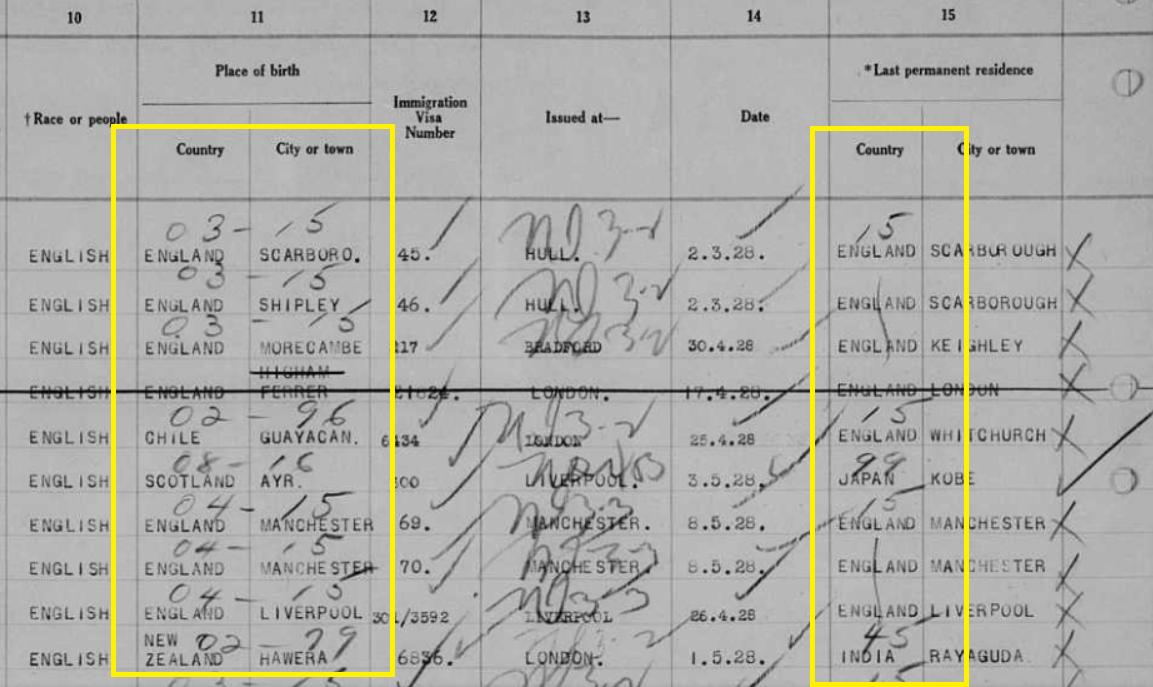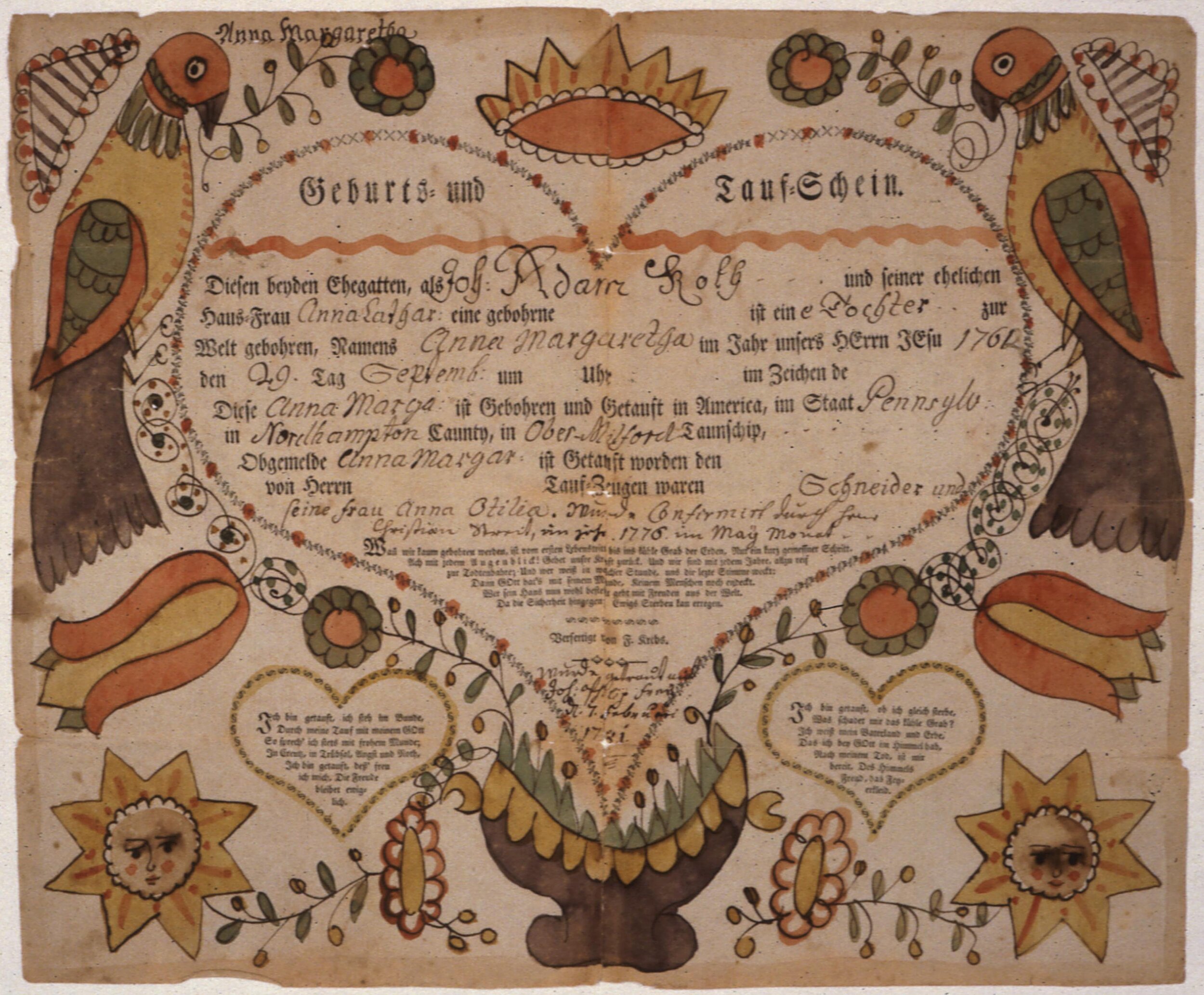This is a bit different of a post today - one in which I am asking for your help to solve. I have posed this question to several different genealogists, asked around in Facebook groups, and have done diligent research and have yet to come up with an answer, so I’m posing this to all of you.
We’ve talked a lot about U.S. passenger arrival lists lately. I’ve shown in my last blog post how the Immigration Act of 1924 codes show up as handwritten notations near the visa columns relating to the type of immigrant, such as “3 - 2” for a government official, or “4 - B” for a returning immigrant that was legally admitted before. I’ve also reviewed additional abbreviations and marks in an earlier post.
However, in my research and review of all of this, I’ve noticed additional notations in many passenger lists for those arriving to the U.S. in the early 20th century, that seem to be related to the locations. I’m calling these handwritten notations “country codes” for now, but keep in mind they could be related to visas, immigration quotas, taxes, passenger counts, race of people, or something else entirely.
My question is - what does these numbers mean, and is there reference material for them we can cross-reference? And of course, in understanding the meaning, do they offer any more information for general genealogy research?
An excerpt from “New York, New York Passenger and Crew Lists, 1925 - 1957.” FamilySearch (https://www.familysearch.org/ark:/61903/3:1:33SQ-G54Q-NCW?fbclid=IwAR3qnmlWVQBCBhPQe7lh8PZQQK6SaktioLG07VlhwO0Gx_0UgFqZ9UyRg1A&i=222&cc=1923888). Highlights my own. Passengers sailing from Liverpool, England, in 1928.
Here’s a breakdown of what I’ve noticed about these codes:
The numbers in the “Place of Birth” column are often four digits in XX - XX format, but they can also appear as fractions
The numbers in the “Last Permanent Residence” column are often two digits, XX
In the “Place of Birth” column, the country could have more than one number. Note in the image above England has both an “03” and “04”.
In the “Last Permanent Residence” column on the right, these seem more static and more likely country codes unique to each location.
There are some similarities between different passenger lists using the same codes (such as England being “04 - 15” in the first and second example), but more differences than similarities. Japan and the U.S. are usually “99” but other countries, such as Chili and Panama in the image below, have also been “99”. Canada is usually 80.
When there is a column for “Race or People” there are also two digit numbers in that column, but only two digits in “Place of Birth” as opposed to the other pattern of XX - XX. Perhaps this means the first part of the four digit number in the “Place of Birth” in the other passenger lists has to do with race?
Another example of similar markings in this 1931 passenger arrival list. “New York, New York Passenger and Crew Lists, 1909, 1925 - 1957”. database, FamilySearch (https://www.familysearch.org/ark:/61903/3:1:33SQ-G5CK-K23?fbclid=IwAR38puxolsWRKGXo0533OG9yTrIO7iITpJjpCrgNkrVYGmBEz__4nGcfZjg&i=10&wc=MFKM-1TL%3A1029954601&cc=1923888).
In this second example above, Chile is marked as both 99 and a 4/12, while Cuba is 83. We also see a “04 - 15” for England, which we’ve seen before in the first example.
A third example from 1931, also arriving to New York, showing the U.S. as “99”. “New York, New York Passenger and Crew Lists, 1909, 1925 - 1957” database, FamilySearch (https://www.familysearch.org/ark:/61903/3:1:33SQ-G5CF-91VY?fbclid=IwAR1DaQeDwqvhBkR7RiRYGEctQH5R1v0hGPqEZzbn6IFjjk4OfpfeRiTnj3w&i=50&wc=MFKM-529%3A1029955901&cc=1923888)
You may have noticed all three examples above have been from New York, so the following three examples are from Boston.
This passenger list from 1931 arriving in Boston adds another column for Race or People, with a “17” for Irish”. There’s also a “13” marked for Ireland, and “99” for U.S.A. “Massachusetts, Boston Passenger Lists, 1891 - 1943”. database, FamilySearch (https://www.familysearch.org/ark:/61903/3:1:33S7-9YW3-VT6?i=38&wc=M6B4-6TG%3A219635101&cc=1923995)
An early passenger list from passengers arriving in Boston in 1927. Like the example before it, there is a “17” for Irish and “13” for Ireland. Also Australia is “78”, Canada is “80” like others examples, India is “45” and Germany is “12”. From “Massachusetts, Boston Passenger Lists, 1891 - 1943”, database, FamilySearch (https://www.familysearch.org/ark:/61903/3:1:33SQ-GYW3-PQM?i=17&wc=M6B4-Z29%3A219600901&cc=1923995)
A 1931 manifest of passengers sailing from Nova Scotia to Boston. Note two digit numbers in the Race column, an “80” marked for Canada, and “99” for U.S.A.“Massachusetts, Boston Passenger Lists, 1891 - 1943”, database, FamilySearch. (https://www.familysearch.org/ark:/61903/3:1:33SQ-GYW3-VRJ?i=47&wc=M6B4-6TG%3A219635101&cc=1923995)
It’s very possible these notations may not be of significance or hold any genealogical value at all - but how will we determine that if we don’t know what they mean?
So what do you all think? Help me solve this - or perhaps, if the answer is already known to some, please fill me in! I’d love to see more examples as well.
Join the discussion on our Facebook page or contact me.
















